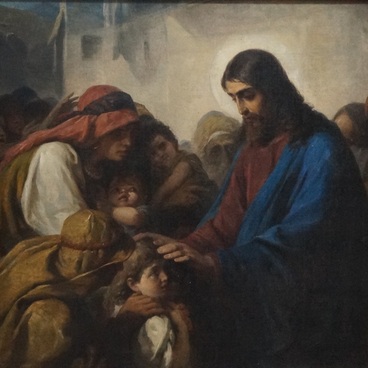On display at the Arzamas Art Museum there is the only lifetime edition by Dmitry Dmitrevsky, a translator and writer. The book is the second of the two parts constituting the ‘Nature, a Mirror of the Creator’s Goodness and Wisdom’, a rare book by an anonymous author whose name is yet to be discovered.
Dmitry Dmitrevsky was born to a religious activist’s family in the Ryazan Governorate. His elder brother, Ivan Dmitrevsky, was a prominent divinity scholar. Dmitry finished the Ryazan Theological Seminary and entered Moscow University in 1782. Later, he became part of the translators’ group of the university printing house. During the same period of time, he met Nikolai Novikov, a journalist and publisher.
Dmitry Dmitrevsky’s own articles were published as well: Nikolai Karamzin’s Moskovsky Zhurnal published his Hymn (“What”s announced by all nature…”), Ivan Krylov’s Zritel published some of his works, too, but all of them without the author’s name.
Dmitrevsky was a prominent public figure as well. He was a member of the Moscow Society of Russian Language and Literature Lovers and the Imperial Moscow Society of Russian History and Antiques. Also, he was a professor, ethnographer, antique and contemporary popular art collector.
In terms of its language and design, the publication displayed by the Arzamas Art Museum follows the tradition of 18th century secular press, the time of efflorescence in Russian book making and printing. In the first quarter of the 18th century, Russia witnessed several national reforms in public government, armed forces, culture, science, and public education. All of those reforms met the vital needs of Russian society. An important role was played by printing. Emperor Peter I made book printing serve the interests of government reform and new culture development. He personally controlled the book printing and publishing business, identified the subjects for new books, monitored translations, and even edited some of the books.
Dmitry Dmitrevsky was born to a religious activist’s family in the Ryazan Governorate. His elder brother, Ivan Dmitrevsky, was a prominent divinity scholar. Dmitry finished the Ryazan Theological Seminary and entered Moscow University in 1782. Later, he became part of the translators’ group of the university printing house. During the same period of time, he met Nikolai Novikov, a journalist and publisher.
Dmitrevsky took to his ideas and contributed to the publication of Novikov’s works, namely ‘Talks with God, or Reflections in the Morning Hours, Reflections on God’s Works in the Kingdom of Nature, and Talks with God, or Reflections in the Evening Hours’. Dmitrevsky was Novikov’s pupil and companion, circulating the latter’s religious-ethical treatises in provinces. Art experts believe Dmitrevsky was a mason. All he published was anonymous. One of his most significant publishing projects was a book by Karl von Eckartshausen, a German mystic.
Dmitry Dmitrevsky’s own articles were published as well: Nikolai Karamzin’s Moskovsky Zhurnal published his Hymn (“What”s announced by all nature…”), Ivan Krylov’s Zritel published some of his works, too, but all of them without the author’s name.
Dmitrevsky was a prominent public figure as well. He was a member of the Moscow Society of Russian Language and Literature Lovers and the Imperial Moscow Society of Russian History and Antiques. Also, he was a professor, ethnographer, antique and contemporary popular art collector.
In terms of its language and design, the publication displayed by the Arzamas Art Museum follows the tradition of 18th century secular press, the time of efflorescence in Russian book making and printing. In the first quarter of the 18th century, Russia witnessed several national reforms in public government, armed forces, culture, science, and public education. All of those reforms met the vital needs of Russian society. An important role was played by printing. Emperor Peter I made book printing serve the interests of government reform and new culture development. He personally controlled the book printing and publishing business, identified the subjects for new books, monitored translations, and even edited some of the books.



